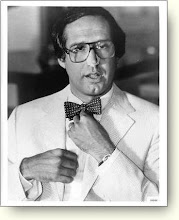
Kurt Cobain, Eminem, personal friends, on corner-of-your-bedroom sized canvases; the portraiture of Elizabeth Peyton smacks of clichéd adolescent indulgence. The more recent work in this Mid-career Survey at The New Museum feels a little less incense soaked and stylized and provides a few more painterly surprises. The surfaces tend towards slick and fast and transparent, and always there is a love for paint.
The text introduction at the
New Museum claims that Peyton’s relevant value and challenge is in portraying her own time through contemporary cultural icons. This may be higher praise than to favor her for the irony of making clichéd or vacant portraits (which do become more present, less vacant, as she works from life in later work). It is refreshing to see someone so unfashionably respectful of her medium fashionable, although it remains ironic that, with so many mediocre paintings in this group, she is praised as much as she is.
Roberta Smith of the New York Times provides far more in depth background on Peyton and her show, than I, or the New Museum could. Also, please see the review by
Paddy Johnson of Art Fag City.









